If you’re looking to propose but have a limited budget, considering a .5 carat diamond ring can be a cost-effective option. However, you might have concerns about whether a .5 carat diamond is too small.
Interestingly, a recent study has shown that a .5 carat diamond is the average size for an engagement ring in several European countries. In this article, we’ll provide you with all the essential information about .5 carat diamonds. So, let’s jump right in and explore the details.
Diamond Price Chart
DESIGN YOUR OWN ENGAGEMENT RING: START WITH A SETTING OR START WITH A DIAMOND. IT’S REALLY UP TO YOU!
| Shape | Top Quality D/E, FL/IF | Our Recommendation G/H, VS2/SI | The Lower End I/J SI1/SI2 |
|---|---|---|---|
| Round | $23,200 | $7,710 | $6,100 |
| Princess | $15,200 | $6,280 | $5,000 |
| Cushion | $15,790 | $5,870 | $3,730 |
| Emerald | $16,050 | $7,760 | $5,140 |
| Oval | $18,950 | $7,390 | $5,760 |
| Pear | $17,800 | $7,580 | $5,710 |
| Marquise | $21,320 | $9,210 | $5,150 |
| Radiant | $20,100 | $7,020 | $4,100 |
| Asscher | $19,610 | $7,720 | $4,360 |
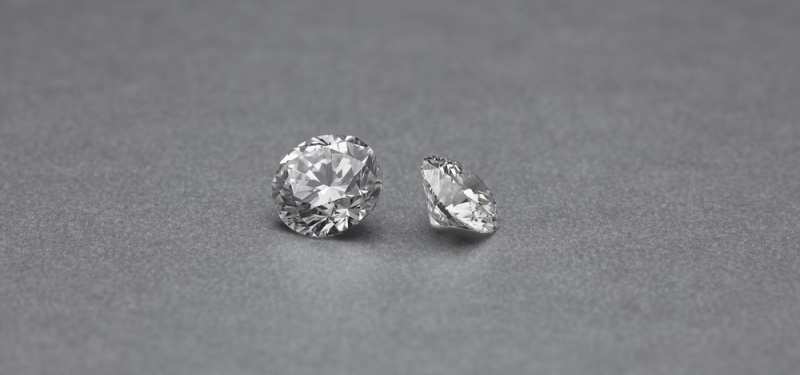
Understanding Diamond Carat And Size
When it comes to purchasing a diamond, carat weight is one of the most crucial factors to consider among the 4Cs. It serves as a universally accepted standard for measuring the weight of a diamond. It’s important not to confuse carat with “karat,” which is a measurement of gold purity.
As you embark on your diamond ring shopping journey, you will likely encounter discussions about carat weight. So, let’s explore the key aspects related to diamond carat weight.
What Does a Diamond Carat Weight Mean?
A 1-carat diamond weighs approximately 0.2 grams. Contrary to common belief, carat does not directly indicate the size of the diamond. The size of a diamond is measured in millimeters.
Diamonds come in various shapes and carat weights. Diamond cutters prioritize maximizing the carat weight of a diamond, as larger stones are rarer and more valuable.
Before the global adoption of the carat as the standard measurement in 1907, there were different methods used to measure diamonds. Over time, carat weight became standardized and is now a prevalent reference point on diamond certificates issued by any reputable laboratory.
Comparing Diamond Carat Sizes
While each diamond possesses its unique characteristics, it is possible to estimate its visual size. This is particularly true because modern diamonds are cut with precision using machines.
Diamonds within each carat range have an average size.
Well-cut fancy-shaped diamonds tend to have more depth compared to well-cut round diamonds. For example, a 1-carat round diamond has an approximate length and width of 6.4 millimeters. On the other hand, a 1-carat Princess-cut diamond measures around 5.5 millimeters.
Fancy-shaped diamonds often appear smaller in size but have a greater carat weight. As a result, round-cut diamonds generally carry a higher price tag compared to fancy-shaped diamonds of the same carat weight.
Visually, it can be challenging to distinguish between diamonds that differ in carat weight by 5 to 10 percent. For instance, a 0.95-carat diamond and a 1-carat diamond will appear nearly identical.
If a diamond is cut too deep, it may seem smaller than a diamond with a lower carat weight. When considering carat weight and size, it’s important to examine the length-to-width ratios for each diamond shape you are interested in. These ratios will help you determine if a diamond is too deep, too shallow, or possesses the proportions you desire.
Keep in mind that carat weight pertains to the diamond’s weight and not its size in millimeters, which can vary depending on the cut. Therefore, it is crucial to select diamonds that are cut exceptionally well. Such stones often exhibit more spread and less depth, resulting in larger measurements.
Now that we have covered the essential information, let’s delve into the world of 0.5-carat diamonds.
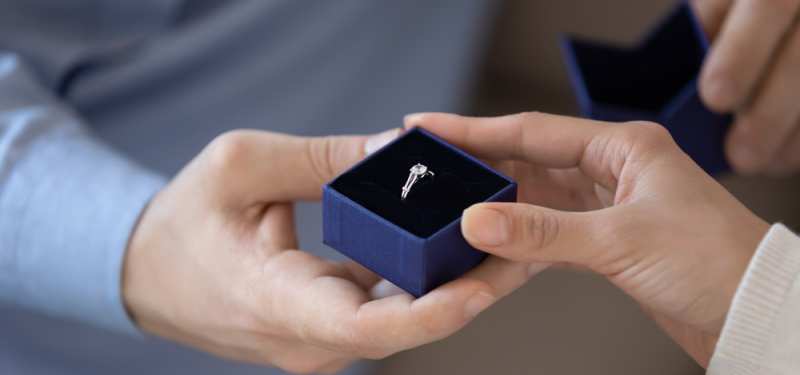
How Big Is A .5 Carat Diamond?
As we’ve previously discussed, the cut quality of a diamond plays a significant role in both its size perception and its brilliance. A superb cut is the key to a diamond that exhibits magnificent sparkle. Even a smaller diamond with an exceptional cut will appear larger and more visually appealing than one with average cut quality.
Now, let’s address the actual size of a .5 carat round-cut diamond, which measures approximately 5.2 millimeters by 5.2 millimeters. If you have a ruler handy, you can easily visualize the size of a .5 carat diamond in real life.
The question remains: Is a .5 carat diamond substantial enough for an engagement ring?
In fact, .5 carat diamonds are often considered ideal for engagement rings in terms of size. They strike a balance, neither too big nor too small. Many diamond engagement rings feature diamonds around the .5 carat mark. Additionally, a .5 carat diamond, also referred to as a half-carat diamond, is perfect for earrings, as a pair of them together amounts to one full carat!
So, if you’re considering a .5 carat diamond for your engagement ring or earrings, rest assured that it is a popular and appealing choice.
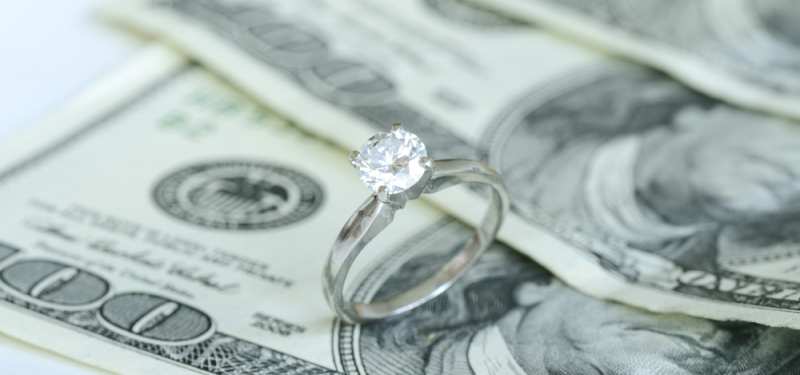
How Much Does A .5 Carat Diamond Cost?
Half-carat diamonds are generally more affordable compared to one-carat diamonds. It is often cheaper to purchase two half-carat diamonds than a single one-carat diamond. This price difference can be attributed to the fact that larger stones are much rarer to find in nature than smaller ones.
When it comes to diamonds, there are no fixed retail recommended prices. The price of a diamond is not solely determined by its carat weight; quality plays a crucial role as well. A half-carat diamond with visible inclusions and some color tint will be significantly less expensive than a flawless one.
However, we understand that you’re seeking a specific answer. As of the day this article was written, the price range for a .5 carat diamond can be anywhere between $740 and $4,860. Keep in mind that this range serves as an example, and actual prices may vary.
The beauty of purchasing a diamond is that you have control over how much you want to spend. Each stone is unique, and they are arranged from least expensive to most expensive based on various factors. Regardless of your budget, there are numerous diamond options available. You can prioritize a stone with the highest quality cut, excellent color or clarity, or focus on dimensions to get the largest .5 carat diamond possible.
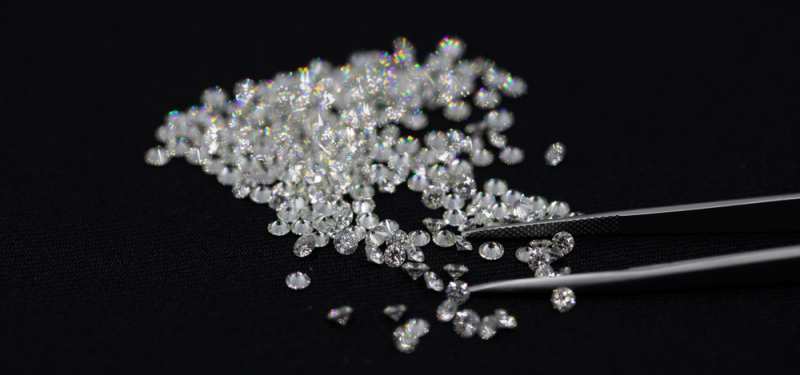
Practical Guidelines For Purchasing A .5 Carat Diamond Ring
When it comes to purchasing a diamond ring, there is a common misconception that a D color (colorless) and IF clarity (internally flawless) diamond is the epitome of beauty. However, the truth is quite different.
The cut of a diamond is what truly determines its sparkle and brilliance. A well-cut G color with VS2 clarity diamond will actually appear brighter and more visually appealing than a poorly cut D color with IF clarity diamond.
Consider this: Would you be willing to pay more for a D/IF diamond that appears smaller, lacks optimal light reflection, and has poor scintillation?
To save money and get the best value for your investment, it’s advisable not to pay for features that are indistinguishable to the naked eye.
Here are some guidelines we recommend when shopping for a 0.5-carat diamond:
- Color: Aim for H or better.
- Clarity: Look for SI1 or better.
- Cut: Opt for diamonds with an ideal or excellent cut.
- Grading Report: Purchase diamonds that come with grading reports from reputable labs like GIA or AGS.
It’s important to note that color and clarity can be subjective preferences, and these guidelines are not set in stone. If you prefer a slightly warmer look, opting for a J or K color is perfectly acceptable.
However, the quality of the diamond’s cut should never be compromised. Cut quality has the most significant impact on a diamond’s beauty and sparkle. A well-cut stone can even minimize the visibility of inclusions and mask slight color differences.
Lastly, it is crucial to always purchase diamonds with a reliable grading report. GIA and AGS are renowned laboratories known for their reputable and accurate diamond grading. As a customer, it is recommended to choose diamonds graded by either of these two labs for peace of mind and confidence in your purchase.
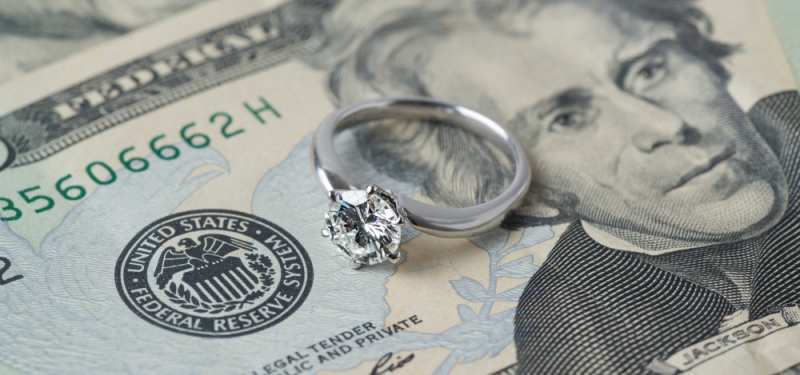
Shopping Tips For .5 Carat Diamond Ring
As previously mentioned, a .5 carat diamond typically measures around 5.2 by 5.2 millimeters. If you desire a larger-looking stone but have budget constraints, there are several strategies you can employ to create the illusion of a bigger diamond ring. Here are some tips:
Opt for a Halo Ring Design: Choosing a halo design is a cost-effective way to achieve the appearance of a larger diamond. The center stone is surrounded by smaller melee stones, creating the optical illusion of a single, larger diamond when viewed from a distance.
Select a Thinner Shank Ring Design: Rings with thinner shanks help accentuate the center stone and make it appear larger when worn. A recommended thickness of 1.6 to 1.8 millimeters can enhance this effect.
Consider Lower Clarity and Color Grades: With smaller diamonds, you have more flexibility in choosing clarity and color grades since imperfections and tint are less noticeable to the naked eye. Opting for lower clarity and color grades allows you to allocate the saved funds toward a larger diamond. By investing effort in your search, you can find eye-clean SI2 diamonds with well-distributed inclusions.
Explore Fancy Shape Diamonds: If you want a diamond that appears larger for its carat weight, consider fancy shapes such as oval, pear, or marquise. Their elongated outlines create a larger face-up appearance compared to round diamonds. Additionally, fancy-shaped diamonds are typically priced lower per carat, as they require less material during the polishing process. This makes them a budget-friendly option for achieving a larger look.
By implementing these strategies, you can maximize the visual impact of a .5 carat diamond ring and create the illusion of a larger and more impressive piece within your budget.
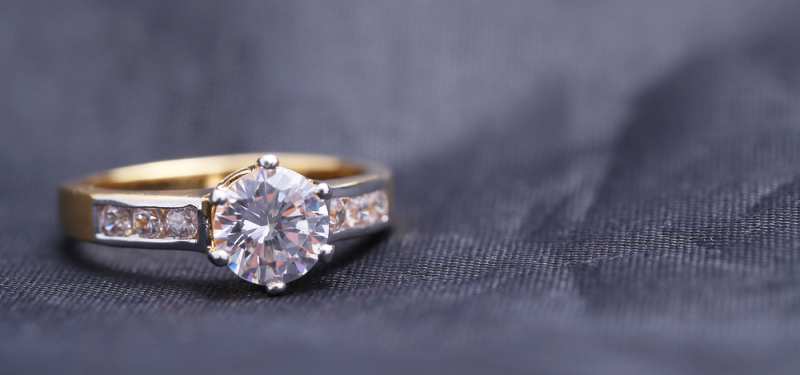
Setting Ideas For .5 Carat Diamond Rings
When it comes to shopping for a diamond engagement ring, the process can feel overwhelming. In addition to selecting the perfect stone, you also need to choose a ring setting that complements it. Here are some intriguing ring designs that pair well with a half-carat diamond:
- Halo Ring: A halo ring can create the illusion of a larger stone by enhancing its brilliance and total surface area. The surrounding diamonds accentuate the center stone. There are various halo ring settings to consider, including classic, vintage, double halo, floral, and hidden halo designs.
- Three-Stone Ring: The three-stone setting offers a unique and versatile option. The three stones, closely set together, symbolize the past, present, and future of the couple’s relationship. Choosing a three-stone ring not only creates a beautiful piece but also holds a meaningful representation.
- Pave Setting: Opting for a pave setting is another excellent choice for your half-carat diamond. This setting adds extra sparkle while highlighting the beauty of the center stone. Pave settings are available in various styles, ranging from vintage to modern designs.
Each of these ring designs offers its own distinct charm and appeal. Consider your personal style and preferences when selecting the perfect setting to showcase your half-carat diamond.
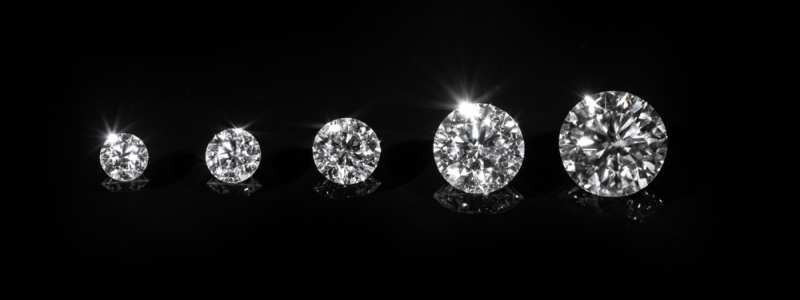
Conclusion
So, the question remains: “Is a .5 carat diamond too small?”
Not at all. In fact, a half-carat diamond is a great size for a beautiful ring without breaking the bank. When shopping for diamonds, it’s crucial to prioritize cut quality and purchase from a reputable vendor.
Since it’s challenging to notice inclusions and body tint in a .5 carat diamond with the naked eye, there’s no need to get overly fixated on high clarity and color grades.
To summarize, here are our recommended guidelines: aim for SI1 or better clarity, H or better color, and an ideal or excellent cut. Additionally, only consider diamonds with grading reports from reputable labs like GIA or AGS.
Lastly, if you want to create the illusion of a larger diamond, selecting the right ring setting can enhance its perceived size and complement its shape.


